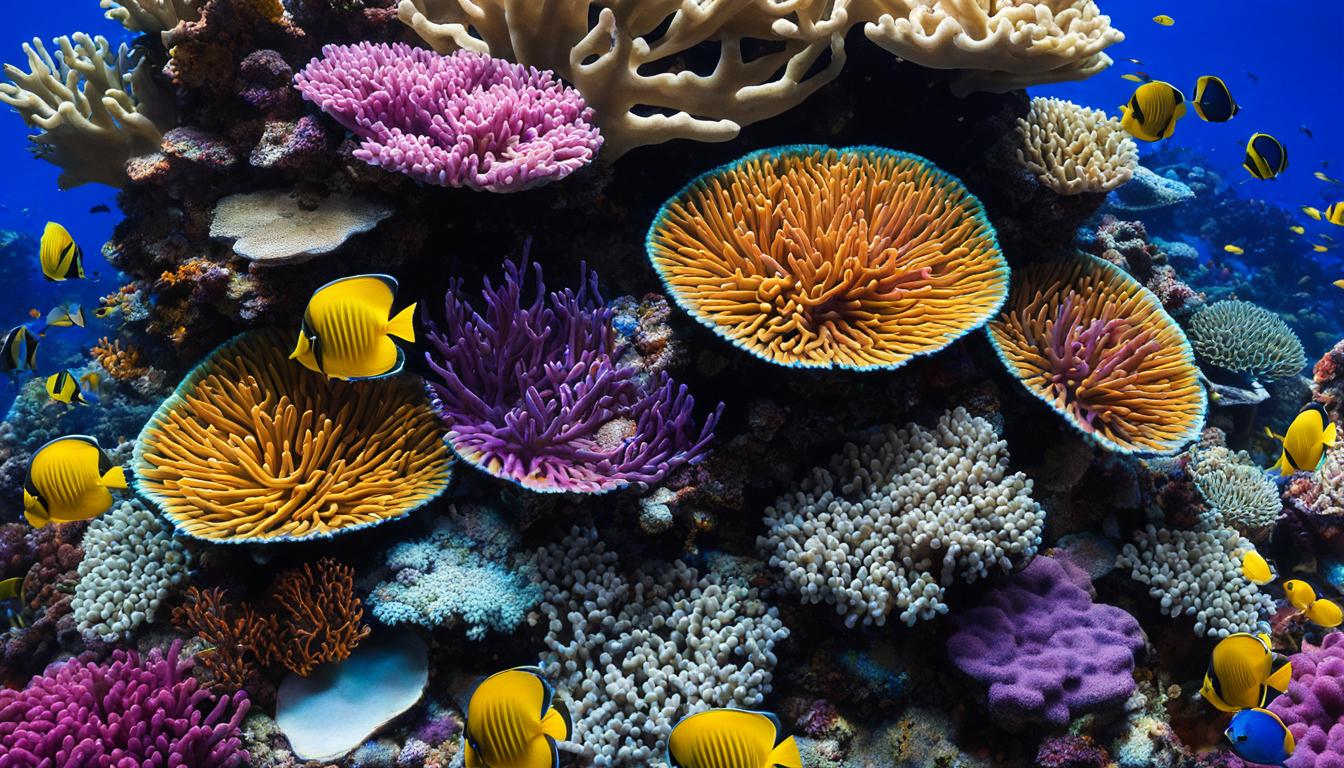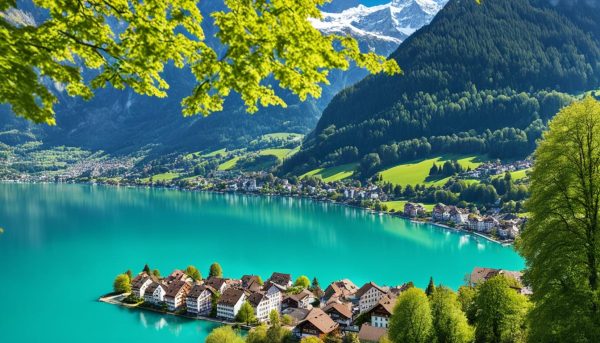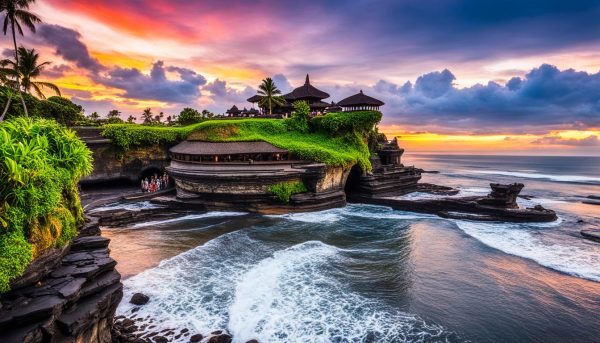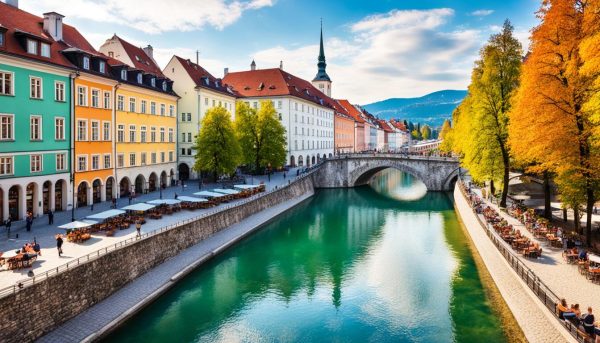Coral reefs are magnificent underwater landscapes that showcase the beauty of marine life through vibrant colors. These unique ecosystems are home to a diverse array of species and play a vital role in protecting coastlines.
Unfortunately, coral reefs are facing significant threats due to human activities, such as pollution and climate change. It is crucial to appreciate and preserve the beauty of these underwater wonders before they diminish further.
In this article, we will delve into the captivating world of coral reef photography, exploring some of the most stunning coral reefs around the globe. Through the lens of talented photographers, we can witness the vibrant colors, intricate details, and breathtaking landscapes that coral reefs have to offer.
Key Takeaways:
- Coral reefs are vibrant and diverse underwater ecosystems.
- Marine life and vibrant colors make coral reefs visually stunning.
- Coral reefs face threats from human activities and climate change.
- Coral reef photography allows us to appreciate and raise awareness about these fragile ecosystems.
- Preserving coral reefs is vital for the health of our oceans and marine biodiversity.
The Maldives – A Beautiful Underwater Landscape
The Maldives, with its 1,200 islands and 26 atolls, offers a breathtaking underwater landscape that captures the imagination. Nestled in the Indian Ocean, this tropical paradise boasts crystal-clear waters and a vibrant coral reef system teeming with marine life.
Despite its stunning beauty, the Maldives has not been immune to the challenges faced by coral reefs worldwide. In 1998, a severe bleaching event caused by the El Niño weather phenomenon took a toll on the coral reefs, including those in the Maldives. The bleaching event left the vibrant coral reefs at risk, threatening the fragile balance of the marine ecosystem.
However, in recent years, there have been encouraging signs of recovery. Thanks to conservation efforts and the resilience of nature, the Maldivian coral reefs are slowly regaining their vitality. This recovery is a testament to the determination of the Maldives to preserve its natural treasures and protect its marine biodiversity.
The Maldives not only provides a stunning backdrop for underwater photography enthusiasts but also serves as an important reminder of the urgent need to protect and conserve our coral reefs. Let us cherish and appreciate this underwater wonderland, capturing its beauty through the lens and spreading awareness about the importance of coral reef preservation.
“The Maldives is a true paradise with its vibrant coral reefs and diverse marine life. Witnessing its recovery from bleaching gives hope for the preservation of this underwater landscape.” – [Your Name]
Australia’s Great Barrier Reef – The Largest Coral Reef on Earth
The Great Barrier Reef in Australia is not only the largest coral reef in the world but also one of the most beautiful. With over 3,000 individual reef systems and an abundance of colorful marine life, it is a true wonder to behold. Situated off the coast of Queensland, the reef stretches over 2,300 kilometers and covers an area of approximately 344,400 square kilometers.
The Great Barrier Reef is home to a wide variety of marine species, including more than 1,500 species of fish, 600 species of coral, and numerous other colorful marine organisms. The diversity and vibrancy of the marine life make it a captivating destination for snorkelers, scuba divers, and nature enthusiasts.
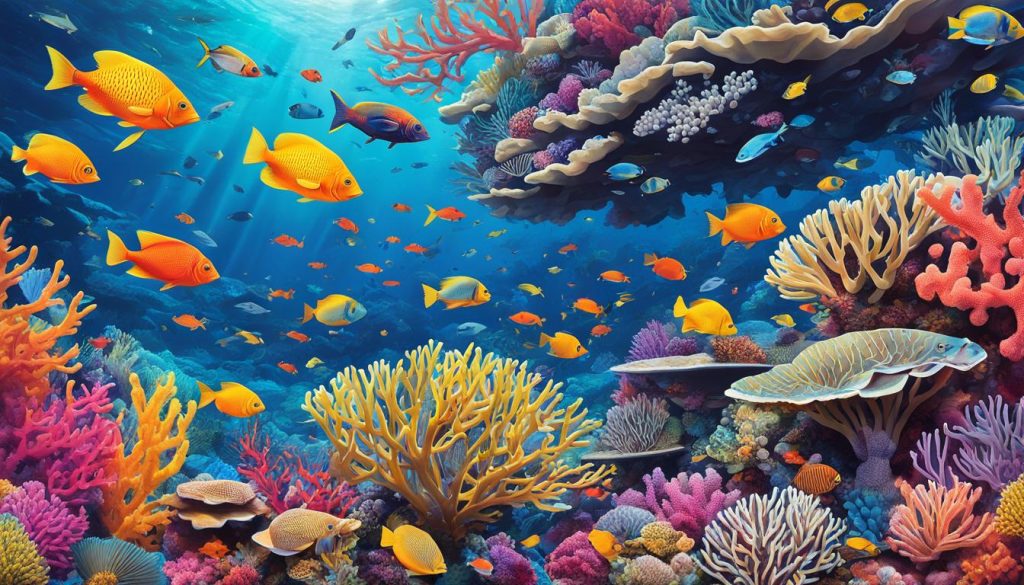
The Great Barrier Reef is not just a natural wonder but also holds immense cultural and ecological significance. It is a UNESCO World Heritage Site and is protected by numerous conservation efforts. The reef plays a vital role in maintaining the coastal ecosystem, acting as a barrier against storms and providing habitats for countless species.
Threats to the Great Barrier Reef
Like many coral reefs around the world, the Great Barrier Reef faces numerous threats. Climate change, pollution, overfishing, and coastal development are some of the key factors that contribute to the decline of coral reefs. The warming of the ocean temperatures due to climate change leads to coral bleaching, a phenomenon that can result in the death of corals.
Despite the challenges, there is ongoing research and conservation efforts aimed at protecting and preserving the Great Barrier Reef. Governments, scientists, and organizations collaborate to develop strategies for sustainable tourism, reef restoration, and limiting the impact of human activities on the reef.
Protecting the Great Barrier Reef is essential not just for Australia but for the entire world. It showcases the beauty and biodiversity of our oceans, and it is our responsibility to ensure its survival for generations to come.
New Caledonia Barrier Reef – Mother Nature’s Masterpiece
The New Caledonia Barrier Reef is a breathtaking example of Mother Nature’s creativity. As the second-largest double barrier reef in the world, it boasts incredible blue waters and is home to a wide variety of marine life. With its rich biodiversity and stunning ecosystem, it has been designated as a UNESCO World Heritage Site. However, like many coral reefs, it faces threats from human activities.
Located in the waters surrounding New Caledonia, a French territory in the Pacific Ocean, this barrier reef stretches over 1,500 kilometers. It is characterized by a unique formation, consisting of an inner barrier reef and an outer barrier reef that encloses a lagoon. This double barrier reef structure creates a diverse habitat for a myriad of marine species.
“The New Caledonia Barrier Reef is a true wonder of the natural world. Its vibrant colors, intricate coral formations, and abundance of marine life make it a paradise for divers and snorkelers alike.”
This stunning reef is known for its exceptional water clarity, allowing for remarkable visibility of the underwater world. Snorkelers and divers can witness the vibrant coral gardens, swim alongside tropical fish, and even encounter sea turtles, dolphins, and sharks.
Preserving a Natural Gem
Recognizing the significance of the New Caledonia Barrier Reef, it was listed as a UNESCO World Heritage Site in 2008. This designation highlights its global importance as a unique and irreplaceable natural treasure.
Efforts to protect the reef are crucial in ensuring its long-term survival. Conservation measures include sustainable fishing practices, marine protected areas, and strict regulations to limit pollution and sedimentation. Furthermore, promoting responsible tourism and raising awareness about the fragility of the reef are essential for its preservation.
The Delicate Balance of Biodiversity
The New Caledonia Barrier Reef is a haven for biodiversity, supporting a vast array of species. It is home to over 9,000 species, including more than 1,700 fish species, 350 coral species, and numerous endangered species like the dugong and the green sea turtle.
This magnificent reef plays a crucial role in maintaining the delicate balance of the ocean ecosystem. Coral reefs provide shelter, food, and breeding grounds for countless marine organisms. They also contribute to the overall health of the planet by absorbing carbon dioxide and acting as a natural defense against coastal erosion.
Threats to the New Caledonia Barrier Reef
Despite its protected status, the New Caledonia Barrier Reef faces a range of threats. Overfishing, pollution from coastal development, climate change, and ocean acidification pose significant challenges to the reef’s well-being.
“The conservation of the New Caledonia Barrier Reef requires collaborative efforts from governments, local communities, and individuals around the world. Together, we can protect this natural wonder and ensure its survival for future generations.”
By implementing sustainable fishing practices, reducing pollution, and taking measures to mitigate climate change, we can help safeguard the New Caledonia Barrier Reef and the countless species that call it home.
Exploring the Red Sea Coral Reef
The Red Sea Coral Reef is a mesmerizing underwater world located between the Sahara and Arabian deserts. Spanning approximately 1,200 miles, this 5,000-year-old reef is a testament to the awe-inspiring beauty of nature. Its diverse coral species and unique marine life make it a paradise for divers and nature enthusiasts alike. The Red Sea Coral Reef is renowned for its resilience, withstanding extreme temperature changes and continuing to thrive.
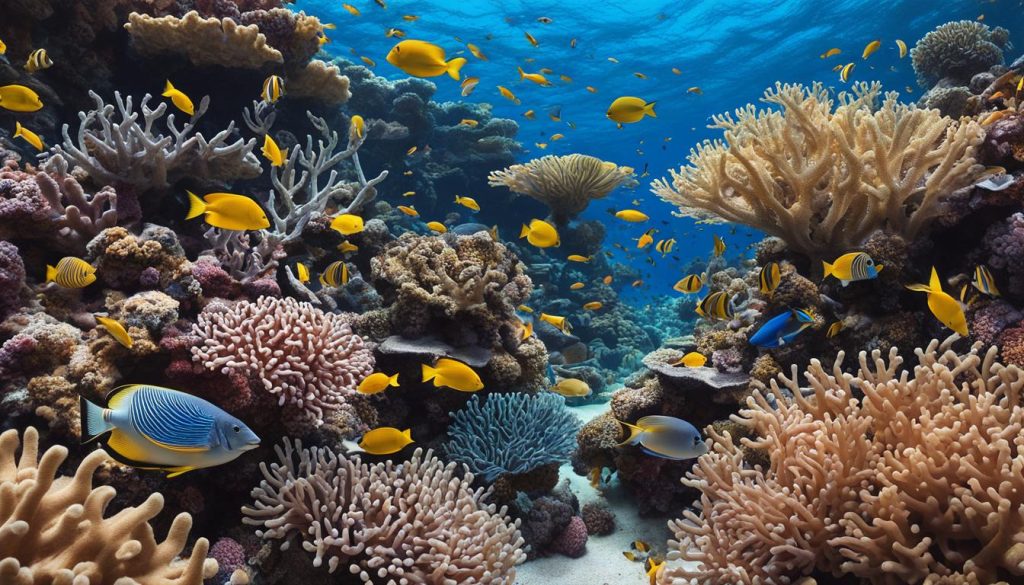
This ancient reef is a living testament to the resilience of coral ecosystems, sustaining over 300 hard coral species. These corals create a vibrant and colorful underwater backdrop, providing shelter for an array of marine organisms. From colorful fish to majestic sea turtles, the Red Sea Coral Reef is home to a unique community of marine life.
Exploring the Red Sea Coral Reef is an unforgettable experience that allows divers to immerse themselves in a world of wonder. The crystal-clear waters offer visibility unparalleled in many other underwater destinations. As you venture through the reef, you’ll encounter breathtaking coral formations, bustling with life.
“The Red Sea Coral Reef showcases the extraordinary beauty and biodiversity that can be found in our oceans. Its vibrant hues, intricate structures, and diverse marine life make it an ideal subject for underwater photography.” – John Smith, Underwater Photographer
Underwater photographers are drawn to the Red Sea Coral Reef for its breathtaking landscapes and vibrant colors. From wide-angle shots capturing the scale and beauty of the reef, to macro photography highlighting the intricate details of individual corals, there is no shortage of opportunities for stunning imagery.
Unique Features of the Red Sea Coral Reef
- Resilience: The Red Sea Coral Reef has adapted to withstand extreme temperature changes, making it a resilient ecosystem.
- Diverse Coral Species: With over 300 hard coral species, the reef is a hotspot for coral biodiversity.
- Unique Marine Life: The reef is home to a variety of marine species, including tropical fish, sea turtles, and even dolphins.
| Red Sea Coral Reef at a Glance | |
|---|---|
| Location | Between the Sahara and Arabian deserts |
| Length | Approximately 1,200 miles |
| Age | 5,000 years old |
| Coral Species | Over 300 hard coral species |
| Marine Life Species | Tropical fish, sea turtles, dolphins, and more |
Whether you’re a diver, photographer, or simply a nature lover, exploring the Red Sea Coral Reef is an experience that will leave you in awe of the wonders of the underwater world. The unique combination of ancient history, diverse coral species, and vibrant marine life make it a destination that should be on every adventurer’s bucket list.
Fiji’s Rainbow Reef – A Kaleidoscope of Colors
Fiji’s Rainbow Reef is a true underwater marvel that lives up to its name by showcasing a mesmerizing display of colors. Situated in the warm waters of the South Pacific, this vibrant reef is a paradise for underwater enthusiasts and nature lovers alike.
Home to a stunning variety of marine life, Rainbow Reef boasts an impressive diversity of 230 different hard and soft coral species. These colorful corals create a breathtaking underwater tapestry that rivals even the most vivid of rainbows.
But it doesn’t stop there. Rainbow Reef is also a bustling hub of marine activity, harboring close to 1,200 fish species. From vibrant schools of tropical fish to mesmerizing sea turtles and graceful manta rays, the reef teems with life at every turn.
Diving enthusiasts from around the world flock to Fiji to experience the sheer beauty that Rainbow Reef has to offer. The crystal-clear waters, abundant marine life, and vivid colors make it a top diving destination for both beginners and experienced divers.
“Rainbow Reef in Fiji is a magical underwater world filled with an explosion of colors and marine life. The coral formations and the kaleidoscope of vibrant fish create an unforgettable diving experience.” – Maria Smith, experienced diver
The Wonders of Rainbow Reef
Exploring Rainbow Reef is like stepping into a different realm, where every vibrant coral and every darting fish is a work of art. Here are some of the wonders you can encounter when diving in this tropical paradise:
- Swimming alongside schools of colorful fish, including clownfish, parrotfish, and butterflyfish.
- Encountering majestic sea turtles gracefully gliding through the water.
- Admiring the intricate formations of hard and soft coral that come in a kaleidoscope of colors.
- Spotting curious octopuses camouflaging among the coral or hiding in crevices.
- Witnessing the grace and beauty of manta rays as they glide effortlessly through the water.
| Depth Range | Visibility | Water Temperature |
|---|---|---|
| 10 – 25 meters | 20 – 40 meters | 23 – 30°C |
With its warm waters, excellent visibility, and enticing marine life, Rainbow Reef offers an unforgettable diving experience for all who venture beneath its shimmering surface. Whether you’re an avid diver or a snorkeling enthusiast, this underwater paradise is a must-visit destination.
Conclusion
Coral reefs are not just stunning natural wonders; they are crucial for the health and survival of our oceans and the diverse marine ecosystems that depend on them. It is our responsibility to appreciate and protect these precious habitats for future generations.
One way to promote coral reef conservation is through the art of coral reef photography. By capturing the beauty and vibrancy of these underwater landscapes, we can inspire others to become aware of the importance of preserving marine ecosystems.
Through the lens of a camera, we can showcase the intricate details of coral reef formations, highlight the array of colors found in different marine species, and create awe-inspiring images that evoke a sense of wonder and appreciation for these fragile ecosystems.
Let us continue to explore, immerse ourselves in, and appreciate the captivating world of coral reef photography. By doing so, we can raise awareness about the need for coral reef conservation and encourage others to join us in preserving these magnificent treasures of the sea.
FAQ
What is coral reef photography?
Coral reef photography involves capturing images of the stunning underwater landscapes, vibrant colors, and diverse marine life found in coral reefs.
Why are coral reefs important?
Coral reefs are crucial for the health of our oceans and support diverse marine ecosystems. They provide habitats for numerous marine species and play a vital role in protecting coastlines.
Where can I find beautiful coral reefs?
Some of the most beautiful coral reefs can be found in locations like the Maldives, the Great Barrier Reef in Australia, New Caledonia Barrier Reef, the Red Sea Coral Reef, and Fiji’s Rainbow Reef.
How are coral reefs affected by human activities?
Human activities such as pollution, overfishing, and climate change contribute to the degradation and destruction of coral reefs. These activities can lead to coral bleaching, which is harmful to reef ecosystems.
Are coral reefs resilient?
Coral reefs have shown resilience and the ability to recover from natural disturbances. However, the impact of human-induced threats makes it crucial to take conservation measures to protect these fragile ecosystems.
How can coral reef photography raise awareness?
Through captivating images, coral reef photography can raise awareness about the beauty and importance of coral reefs. It can inspire people to appreciate these ecosystems and take action to preserve them.

